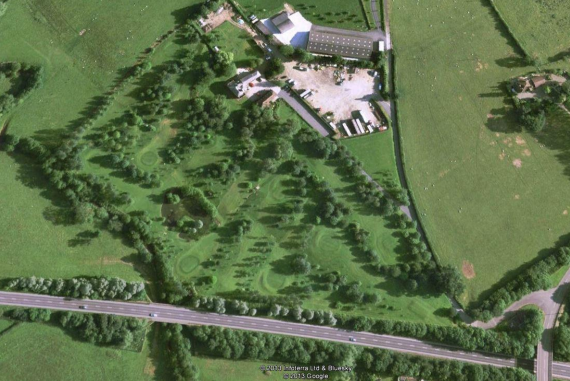In November 2014, an application was made for 20 retirement homes at Elm Lodge, on the goods yard beside the mini golf course. The application was rejected. The developer resubmitted the plans and the were rejected again. And now a planning inspector has finally thrown out the scheme (16/02414/REF).
I have largely kept out of this one, as I know the applicant well. I would not have been allowed to speak on the application at planning committee but it never got that far. The scheme was rejected by council planning officers because it was too far from services in the town and outside the town development boundary defined in the local plan, SAMDev. I had asked for the decision to be made by the South Planning Committee but my request was rejected because there were straightforward grounds for refusal by officers.
The inspector upheld the planning officers’ decision.
He acknowledged the development “would re-use a brownfield site, be delivered in a short period of time, create employment and provide independent housing for an ageing population.” But his main concern was access to services:
The site “would not provide a suitable site for housing having regard to the proximity of services. It would result in clear harm when considering the social and environmental dimensions of sustainable.”
The inspector said that local and national planning rules “seek to ensure development is focussed within the development boundaries of market town’s [sic] such as Ludlow, makes the fullest possible use of public transport and walking to avoid dependency on private car travel.” I support that. We should build on the brownfield sites in the town and then east of the bypass where we can provide regular bus services. We can’t provide a bus service to Elm Lodge so people would have to drive to town by car or hire a taxi.
This site backs on to a farmyard. The inspector said:
I have concerns regarding residential use being so close to a large agricultural building… Whilst future occupiers may choose to live in a countryside location and so expect noise from farming activities, this does not justify nor remove the subsequent harm to living conditions.
If we are only to approve housing in noise free locations, we will never approve housing.
I am not saying that the inspector was wrong in taking into account noise and disturbance from the agricultural yard. It is just frustrating that inspectors routinely approve housing on main roads and adjacent to rail lines on the assumption that noise from transport does not matter (let alone air pollution). Yet noise from a farmyard seems to count much more in planning decisions.
I am sure this is the right decision. The location is unsustainable and inappropriate for a retirement settlement. But I remain uncomfortable with decisions being made by a planning inspector who will have been in Ludlow for maybe an hour in the course of his inquiry.

